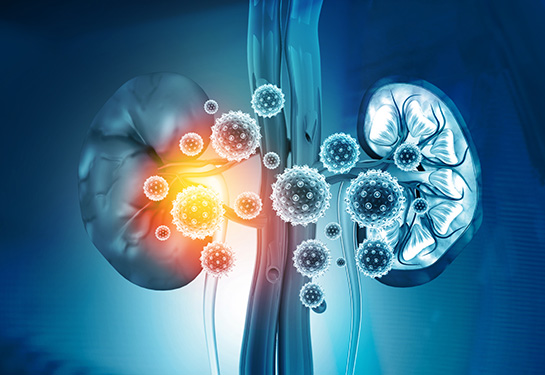This article explores the common misconception that brain tumours primarily affect older adults, revealing the reality that they can occur at any age. By debunking myths surrounding brain tumours, we aim to enhance understanding and promote awareness of this complex health issue.
Does Brain Tumour Affect Only Older Adults? Bursting Common Myths About Brain Tumours
Brain tumours are often associated with older adults, leading to widespread misconceptions about their occurrence and impact on different age groups. However, brain tumours can affect individuals of all ages, including children and young adults. This article aims to debunk common myths surrounding brain tumours, providing accurate information about their types, causes, symptoms, and the demographic groups they impact.
Understanding Brain Tumours
A brain tumour is an abnormal growth of cells within the brain or surrounding structures. These tumours can be classified into two main categories: benign and malignant. Benign tumours are non-cancerous and usually do not spread to other parts of the body, while malignant tumours are cancerous and can invade nearby tissues or metastasize to other areas.
Brain tumours can originate in the brain itself (primary brain tumours) or spread from other parts of the body (secondary or metastatic brain tumours). The most common types of primary brain tumours include:
- Gliomas: These tumours arise from glial cells, which support and protect neurons. Gliomas can be further classified into different subtypes, including astrocytomas and oligodendrogliomas.
- Meningiomas: These tumours develop in the meninges, the protective membranes surrounding the brain and spinal cord. They are typically benign but can still cause significant symptoms due to their location.
- Medulloblastomas: Most common in children, these aggressive tumours arise from the cerebellum, the part of the brain responsible for coordination and balance.
- Pituitary Tumours: These tumours occur in the pituitary gland, which regulates various hormones in the body.
Myth 1: Brain Tumours Only Affect Older Adults
One of the most prevalent myths is that brain tumours predominantly affect older adults. While it is true that certain types of brain tumours are more common in older populations, this does not mean that younger individuals are immune. In fact, brain tumours can occur at any age, including childhood.
According to the American Brain Tumour Association, brain tumours are the leading cause of cancer-related deaths in children. Medulloblastomas, for example, are primarily found in young children, while other types, like gliomas, can also occur in adolescents. Furthermore, some malignant tumours, such as glioblastomas, are frequently diagnosed in middle-aged adults.
Myth 2: All Brain Tumours Are Cancerous
Another misconception is that all brain tumours are cancerous. While brain tumours can be classified as malignant or benign, not all brain tumours pose a severe health threat. Benign tumours, such as meningiomas, often grow slowly and may not require immediate treatment. In some cases, they can be monitored over time without intervention.
However, benign tumours can still lead to complications depending on their location and size. For example, a large meningioma can press against vital brain structures, causing headaches, seizures, or neurological deficits. Therefore, while benign tumours are not cancerous, they can still significantly impact a person’s health.
Myth 3: Brain Tumours Are Always Hereditary
While genetics can play a role in the development of certain types of brain tumours, it is a myth that all brain tumours are hereditary. Most brain tumours occur sporadically, meaning they arise without a known genetic cause.
Certain genetic syndromes, such as Neurofibromatosis type 1 and 2, Li-Fraumeni syndrome, and Turcot syndrome, increase the risk of developing brain tumours. However, these cases are relatively rare. The majority of individuals diagnosed with brain tumours do not have a family history of the disease.
Environmental factors, exposure to radiation, and other risk factors may contribute to the development of brain tumours. For example, individuals exposed to ionizing radiation, particularly during childhood, have an increased risk of developing brain tumours later in life.
Myth 4: Brain Tumour Symptoms Are Obvious
Many people believe that brain tumours present clear and distinct symptoms. While some individuals may experience noticeable signs, others may have subtle or nonspecific symptoms that can be easily overlooked or misattributed to other conditions.
Common symptoms of brain tumours include:
- Headaches: Frequent or severe headaches, especially those that worsen over time or differ from typical headache patterns.
- Seizures: New-onset seizures can be a sign of a brain tumour, even in individuals with no previous history of seizures.
- Cognitive Changes: Memory problems, difficulty concentrating, and changes in behavior or personality can occur.
- Neurological Deficits: Weakness, numbness, or changes in vision or speech may indicate the presence of a brain tumour.
- Balance and Coordination Issues: Problems with balance and coordination can arise, especially with tumours affecting the cerebellum.
Because these symptoms can be associated with various conditions, many individuals may delay seeking medical attention, resulting in advanced-stage diagnosis. It’s crucial for individuals experiencing persistent or worsening symptoms to consult a healthcare professional for evaluation.
Myth 5: Treatment Options Are Limited
Another misconception is that treatment options for brain tumours are limited and ineffective. While the prognosis for some malignant brain tumours can be challenging, advancements in treatment modalities have significantly improved outcomes for many patients.
Treatment options for brain tumours may include:
- Surgery: The primary treatment for many brain tumours is surgical resection, where the tumour is removed surgically. The success of surgery depends on the tumour’s type, size, and location.
- Radiation Therapy: Radiation therapy may be used after surgery to target remaining cancer cells or as the primary treatment for inoperable tumours. Techniques such as stereotactic radiosurgery deliver precise radiation to the tumour while minimizing damage to surrounding healthy tissue.
- Chemotherapy: Chemotherapy drugs can be administered to target cancer cells and prevent their growth. In some cases, chemotherapy may be combined with other treatments.
- Targeted Therapy and Immunotherapy: Emerging therapies are designed to target specific molecular characteristics of brain tumours. Immunotherapy harnesses the body’s immune system to fight cancer cells, showing promise in clinical trials.
The choice of treatment depends on various factors, including the tumour type, location, and the patient’s overall health. Multidisciplinary teams, including neurosurgeons, medical oncologists, and radiation oncologists, collaborate to create personalized treatment plans for patients.
Myth 6: Brain Tumours Always Result in Death
While brain tumours can be life-threatening, it is a myth that they always lead to death. The prognosis for individuals diagnosed with brain tumours varies widely depending on factors such as the tumour type, grade, size, location, and the patient’s age and overall health.
Some benign tumours may not require immediate treatment and can be managed with observation. Even certain malignant tumours can be treated effectively, leading to prolonged survival and improved quality of life. Advances in research and treatment options have led to increased survival rates for many brain tumour patients.
According to the American Cancer Society, the five-year survival rate for individuals diagnosed with certain types of brain tumours has improved over the past few decades. While some aggressive tumours, like glioblastomas, still pose significant challenges, many patients are living longer, healthier lives due to advancements in treatment and care.
The Importance of Early Detection and Awareness
Awareness and early detection are critical in improving outcomes for individuals with brain tumours. Education about the symptoms, risk factors, and available treatments can empower individuals to seek medical attention when needed.
Public health campaigns, community outreach, and support groups play a crucial role in raising awareness about brain tumours and providing resources for affected individuals and their families.
Healthcare providers should encourage discussions about brain tumours during routine check-ups, especially for individuals with risk factors or concerning symptoms. Additionally, promoting mental health support for patients diagnosed with brain tumours is essential, as the emotional toll of a brain tumour diagnosis can be significant.
Brain tumours do not discriminate based on age; they can affect individuals across the lifespan, including children, adolescents, and young adults. Debunking common myths surrounding brain tumours is essential to raise awareness and promote understanding about this complex disease.
By providing accurate information about brain tumours, their symptoms, and available treatment options, we can encourage early detection, reduce stigma, and improve outcomes for patients. Education and awareness are key components in the fight against brain tumours, empowering individuals and communities to support one another in navigating the challenges of this disease. As research continues to advance, the future holds promise for better prevention, treatment, and understanding of brain tumours, ultimately improving the lives of those affected by this condition.














